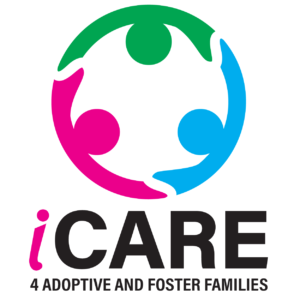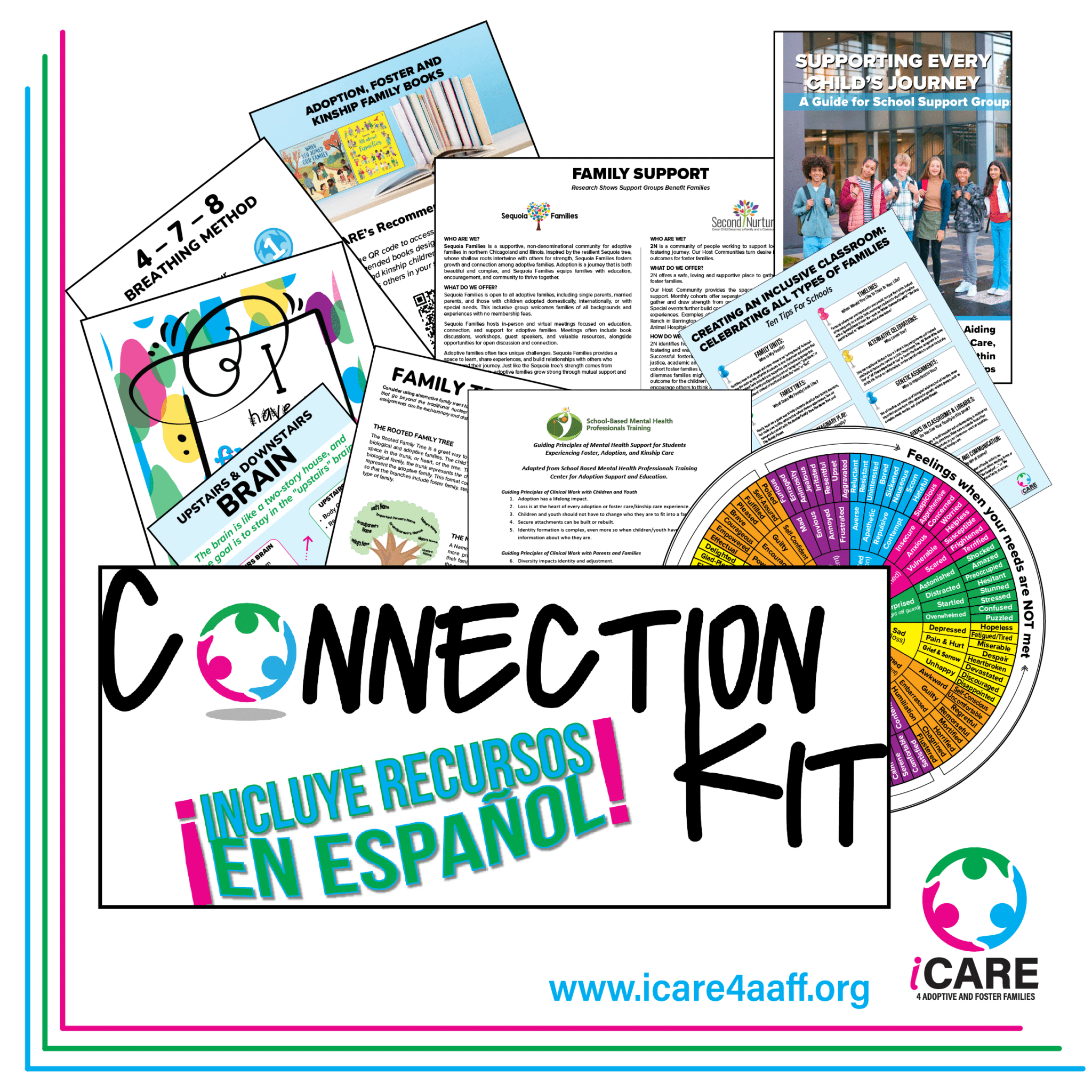Family Tree Options
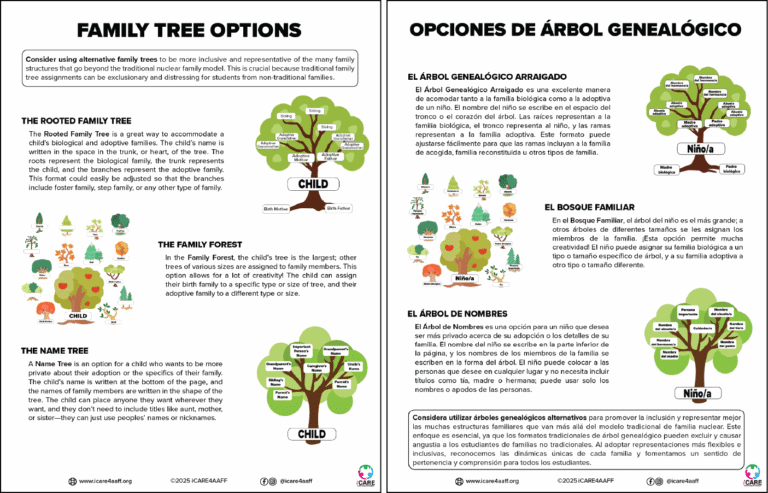
Consider using alternative family trees to promote inclusion and better represent the many family structures that go beyond the traditional nuclear family model. This approach is essential, as traditional family tree formats can exclude and cause distress for students from non-traditional families. By adopting more flexible and inclusive representations, we acknowledge the unique dynamics of each family, fostering a sense of belonging and understanding for all students.
Considera utilizar árboles genealógicos alternativos para promover la inclusión y representar mejor las muchas estructuras familiares que van más allá del modelo tradicional de familia nuclear. Este enfoque es esencial, ya que los formatos tradicionales de árbol genealógico pueden excluir y causar angustia a los estudiantes de familias no tradicionales. Al adoptar representaciones más flexibles y inclusivas, reconocemos las dinámicas únicas de cada familia y fomentamos un sentido de pertenencia y comprensión para todos los estudiantes
Family Forest / el Bosque Familiar

In the Family Forest, the child’s tree is the largest; other trees of various sizes are assigned to family members. This option allows for a lot of creativity! The child can assign their birth family to a specific type or size of tree, and their adoptive family to a different type or size.
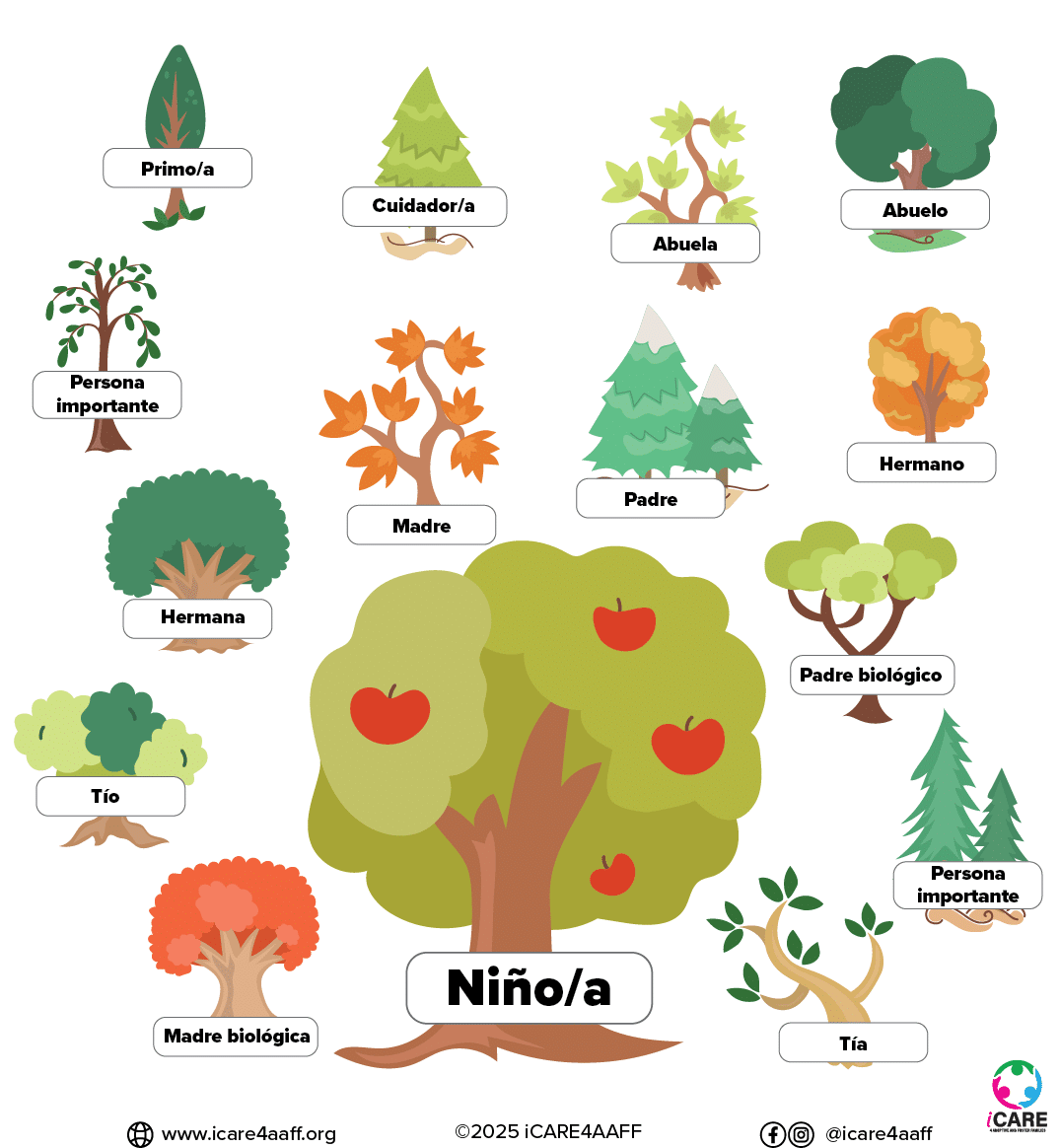
En el Bosque Familiar, el árbol del niño es el más grande; a otros árboles de diferentes tamaños se les asignan los miembros de la familia. ¡Esta opción permite mucha creatividad! El niño puede asignar su familia biológica a un tipo o tamaño específico de árbol, y a su familia adoptiva a otro tipo o tamaño diferente.
The Name Tree / El Árbol de Nombres

A Name Tree is an option for a child who wants to be more private about their adoption or the specifics of their family. The child’s name is written at the bottom of the page, and the names of family members are written in the shape of the tree. The child can place anyone they want wherever they want, and they don’t need to include titles like aunt, mother, or sister—they can just use peoples’ names or nicknames.
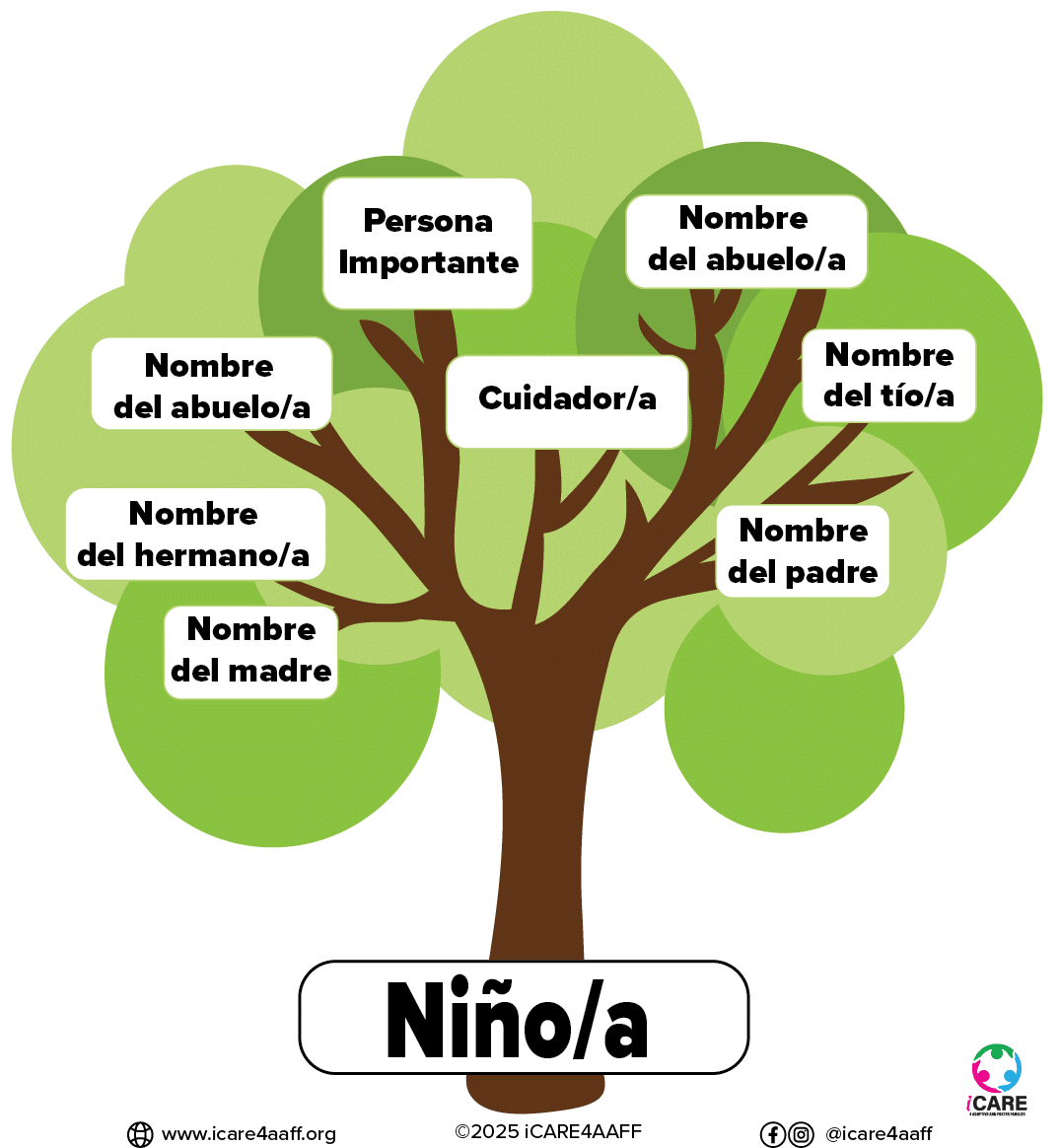
El Árbol de Nombres es una opción para un niño que desea ser más privado acerca de su adopción o los detalles de su familia. El nombre del niño se escribe en la parte inferior de la página, y los nombres de los miembros de la familia se escriben en la forma del árbol. El niño puede colocar a las personas que desee en cualquier lugar y no necesita incluir títulos como tía, madre o hermana; puede usar solo los nombres o apodos de las personas.
The Rooted Family Tree / El Árbol Genealógico Arraigado

The Rooted Family Tree is a great way to accommodate a child’s biological and adoptive families. The child’s name is written in the space in the trunk, or heart, of the tree. The roots represent the biological family, the trunk represents the child, and the branches represent the adoptive family. This format could easily be adjusted so that the branches include foster family, step family, or any other type of family.

El Árbol Genealógico Arraigado es una excelente manera de acomodar tanto a la familia biológica como a la adoptiva de un niño. El nombre del niño se escribe en el espacio del tronco o el corazón del árbol. Las raíces representan a la familia biológica, el tronco representa al niño, y las ramas representan a la familia adoptiva. Este formato puede ajustarse fácilmente para que las ramas incluyan a la familia de acogida, familia reconstituida u otros tipos de familia.
